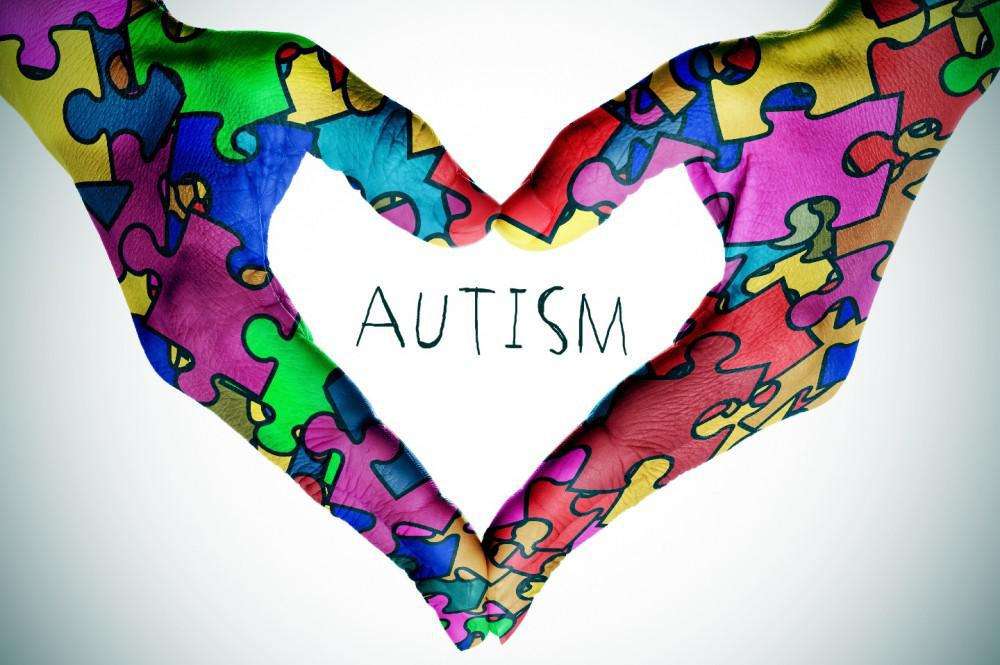TMS Treatment for Autism: What is it and Does it Work?
Talk about transcranial magnetic stimulation, or TMS therapy, is raising hopes of parents who wonder if the treatment could work for their child with autism spectrum disorder (ASD).
Parents with children on the spectrum are wary of the term “cure”. For some, it’s because they’ve been disappointed by snakeoil and false hope more than they care to remember; for others, the term “cure” seems more fitting to a disease. When you talk with parents of kids on the spectrum, most are willing to do anything to help their children thrive while firmly embracing who he/she is.
Download your FREE guide on
Autism Therapies and Solutions
And yet, even autistic adults who celebrate the beautiful difference of their minds, admit that certain symptoms associated with autism create difficulties in everyday life. For example, those on the spectrum often have trouble with social situations and communication. Addressing these challenges in a way that embraces who the child is, but modifies behavior to make life easier, seems like a worthy (and lofty!) goal.
Some see transcranial magnetic stimulation (TMS) as a treatment worthy of optimism. While researchers urge caution, studies suggest promise and both diagnostic and therapeutic potential (Oberman et al., 2016).
What is TMS?
TMS or transcranial magnetic stimulation, is a treatment that directs recurring magnetic energy pulses at specific regions of the brain involved in mood control. The definition sounds a little frightening—energy or magnetic pulses entering the brain brings up images of inhumane psych wards in horror movies. But actually the treatment is noninvasive, with relevantly little discomfort, and it’s helped many patients with debilitating depression.
TMS therapy (or treatment) uses short pulses of magnetic fields to stimulate nerve cells in specific areas of the brain, like the prefrontal cortex which is involved with mood regulation.
When mentioning TMS, people are most familiar with its potential as a treatment for major depressive disorder, but its therapeutic benefits are being investigated for other conditions too. In this regard, researchers believe TMS may possibly alleviate symptoms associated with obsessive compulsive disorder (OCD), autism spectrum disorder (ASD), attention deficit hyperactivity disorder (ADHD), anxiety, and posttraumatic stress disorder (PTSD).
How does it work?
When someone undergoes TMS, the person administering (usually a psychiatrist, physician, or sometimes a clinical psychologist) presses a device to the left side of the patient’s head, and starts the process of moving magnetic fields into the brain with the flip of a switch.
These magnetic fields produce tiny magnetic currents as they move into the brain. The currents activate cells to release neurotransmitters like serotonin and dopamine. The release of these feel-good chemical messengers may restore balance in the brain which may bring relief for those suffering from depression.
As individuals with autism may have low brain serotonin concentrations (Ademsen et al., 2014), it’s no wonder researchers see promise in the treatment for those with autism spectrum disorder (ASD).
Practically speaking
Most doctors state sessions lasting between 30-40 minutes are best, with a recommended 30 sessions over the course of six weeks. Patients usually experience relief (like an elevation in mood) within two to four weeks of the treatment commencing.
Although TMS is FDA approved, this authorization applies to administration in adults (between the ages of 18-70) and only for severe depression that doesn’t respond to other medications—FDA authorisation now applies to other conditions like OCD too. Should a child therefore undergo the treatment for autism, it would be considered “off-label”.
Is TMS an appropriate treatment for children?
While TMS may sound good in theory, parents are obviously concerned about any type of therapy administered to their child’s brain. However, a study (Yang et al., 2019) reported significant reduction in social and language related symptoms after children with ASD underwent TMS treatment courses. The study also reported possible improvements in cognition and imitation as reported by caregivers. The study saw promise in TMS to improve core deficits in low-functioning children with ASD.
Even though suggestions of success are encouraging, parents also want reassurance that the treatment does not have serious side effects. In addition, parents may wonder about the level of discomfort and the sensory implications of the therapy.
As mentioned, much research is still needed in terms of the application and side effects of TMS, especially when administered to children on the spectrum. In the meantime, studies pertaining to the effects of TMS on neurotypical children may be an appropriate source.
Don’t miss out on our special offer. Click here to find out more
In a study by Krishnan et al. (2014) noninvasive brain stimulation techniques such as TMS were examined to assess the treatment’s safety when administered to children and adolescents.
The study found repetitive TMS to be safe in children and adolescents when safety guidelines were followed. When side effects were present, it seemed similar to side effects experienced by adults. Out of 513 of the children (or adolescents) involved in the study, 11.5% experienced headaches, 2.5% experienced scalp discomfort, 1.2% experienced twitching, and a very small percentage experienced mood changes, fatigue and tinnitus (Krishnan et al., 2014).
When looking at anecdotal evidence of pain and discomfort experienced, when undergoing TMS treatment, the verdict seems positive. The treatment is generally well tolerated and some feel the lack of serious side effects make it a great alternative for those sensitive to medication.
Parents should, however, be aware of reports of patients experiencing pain, especially at the site of stimulation. Croarkin et al. (2011) detailed the pain experienced (during TMS administration) by two children aged 10, and an adolescent aged 17. The 17-year-old mentioned the pain felt like a “headache, sort of like a migraine behind my eyes.”
This high level of pain experienced may be rare, but parents of children with ASD should be aware of the worst case scenario—especially when children with sensory difficulties like tactile defensiveness are involved.
An aspect of TMS that probably needs more investigation, especially for children with autism, is the risk of seizures. As children with autism have a higher chance of being diagnosed with epilepsy too, this concern should be addressed with a qualified professional before deciding on the appropriateness of TMS.
Stultz et al. (2020) produced a literature review of the safety of TMS with respect to seizures and mentions that TMS has been successfully used in patients with epilepsy and traumatic brain injuries. It is further mentioned in the review that seizures are a rare but serious side effect of TMS, but the risk may be low at less than one percent.
TMS but better?
There may be further good news, as a new treatment combines TMS with Quantitative Electroencephalogram (qEEG) and Electrocardiogram (ECG/EKG) to deliver a tailored treatment to the patient’s unique brain pattern.
The fact that this personalized protocol, known as Magnetic e-Resonance Therapy (MeRT), ascertains the individual’s brain patterns, means greater success may be achieved in restoring chemical imbalances.
For parents who would like to find out more about MeRT, specifically for a child with ASD, the following story of Frankie (who stopped toe-walking and learned to talk after his family discovered MeRT) will be an inspiring read.
More research needed
Experts agree that, although TMS and specifically MeRT appear promising, research is urgently needed to establish efficiency and the long term effects of the treatment. Researchers are hopeful that future studies will find proof that TMS and MeRT are effective in treating certain ASD symptoms like social and language deficiencies.
Download your FREE guide on
Autism Therapies and Solutions
The TMS journey of Kim Hollingsworth Taylor (founder of the Clearly Present Foundation) became an internet cautionary tale for the extreme highs and lows she experienced when her son underwent TMS. The treatment relieved some of her son’s autistic symptoms—but only temporarily. This only highlights the fact that more research is needed, especially concerning long-term outcomes of TMS.
Wrapping up
When a study (Sokhadze et al. 2018) lists significant improvements in measures of executive functions and behavior in kids with autism, parents may rightfully experience a surge of hope. Researchers do urge caution, however, as the one thing they seem to agree on is that many more clinical trials and studies are needed to establish the effectiveness of TMS for core symptoms of ASD.
If you’ve read the research and you believe your child may benefit from TMS or MeRT, the best course of action would be to see your physician or a psychiatrist. These medical professionals will take your child’s medical history (and conditions like epilepsy) into consideration before helping you decide if it is the right course of action for your child.
References:
Adamsen, D., Ramaekers, V., Ho, H.T. et al. (2014). Autism spectrum disorder associated with low serotonin in CSF and mutations in the SLC29A4 plasma membrane monoamine transporter (PMAT) gene. Molecular Autism 5, 43. https://doi.org/10.1186/2040-2392-5-43
Coarkin, P. E., Wall, C. A., King, J. D., Andrew Kozel, F., & Daskalakis, Z. J. (2011). Pain during transcranial magnetic stimulation in youth. Innovations in clinical neuroscience, 8(12), 18–23.
Krishnan, C., Santos, L., Peterson, M. D., & Ehinger, M. (2015). Safety of noninvasive brain stimulation in children and adolescents. Brain stimulation, 8(1), 76–87. https://doi.org/10.1016/j.brs.2014.10.012.
Oberman, L. M., Rotenberg, A., & Pascual-Leone, A. (2015). Use of transcranial magnetic stimulation in autism spectrum disorders. Journal of autism and developmental disorders, 45(2), 524–536. https://doi.org/10.1007/s10803-013-1960-2
Sokhadze, E. M., Lamina, E. V., Casanova, E. L., Kelly, D. P., Opris, I., Tasman, A., & Casanova, M. F. (2018). Exploratory Study of rTMS Neuromodulation Effects on Electrocortical Functional Measures of Performance in an Oddball Test and Behavioral Symptoms in Autism. Frontiers in systems neuroscience, 12, 20. https://doi.org/10.3389/fnsys.2018.00020
Stultz DJ, Osburn S, Burns T, Pawlowska-Wajswol S, Walton R. Transcranial Magnetic Stimulation (TMS) Safety with Respect to Seizures: A Literature Review. Neuropsychiatr Dis Treat. 2020;16:2989-3000
https://doi.org/10.2147/NDT.S276635.
Yang, Y., Wang, H., Xue, Q., Huang, Z., & Wang, Y. (2019). High-Frequency Repetitive Transcranial Magnetic Stimulation Applied to the Parietal Cortex for Low-Functioning Children With Autism Spectrum Disorder: A Case Series. Frontiers in psychiatry, 10, 293. https://doi.org/10.3389/fpsyt.2019.00293.



